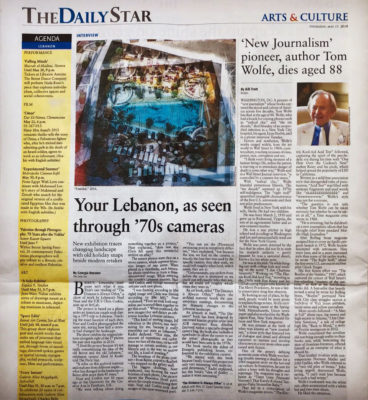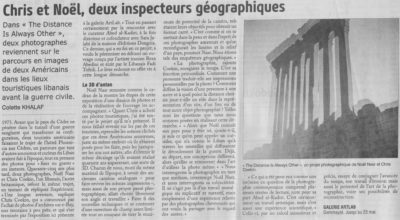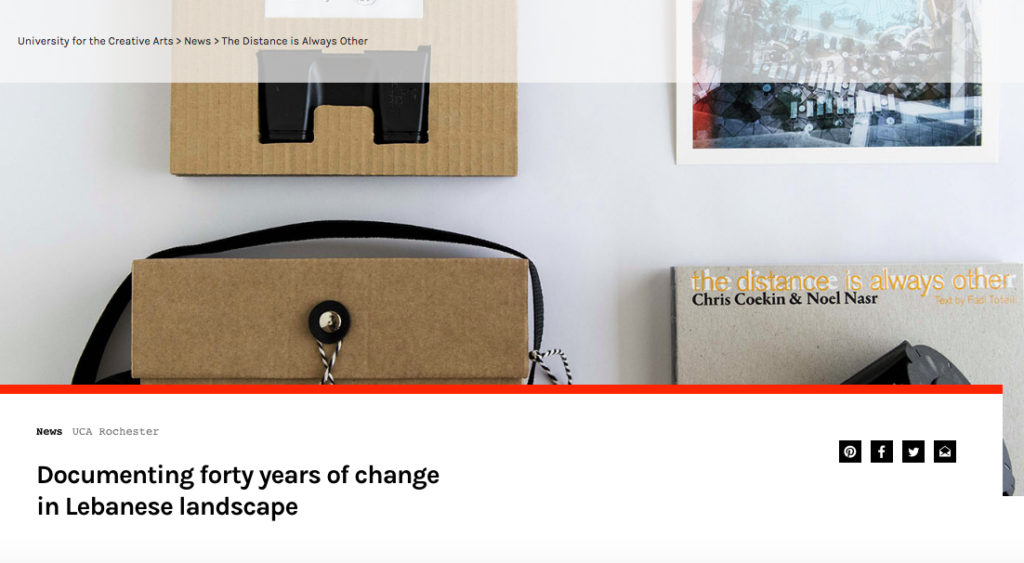Scene Arabia article – Cities Under Quarantine – Dongola Limited Editions
“While I was at home during quarantine, everything was closed. Even arts supply stores were closed, and it all happened suddenly, so as an artist myself I wasn’t prepared for that. I had a small accordion book at home, and I started working on it. I really liked the process, it somehow released me from all the tension and anxiety I was living,” Abed Al Kadiri, artist and co-founder of Beirut’s Dongola Limited Editions, tells us over a still-quarantined Zoom call.
It’s difficult to put a painting in a mailbox.
Out of an unsure call with his business partner, Sarah Shalabi, Al Kadiri found his quarantine project, one he could transport and replicate across continents and timezones. In the safe but solitary settings of homes across the Middle East, Europe, and America, Dongola’s ‘Cities Under Quarantine: The Mailbox Project’ has brought together 57 Arab artists’ unique experiences and interpretations of this particular moment in history.
The project’s concept was simple, but effective. 57 handmade, hand-stitched books created in-house in Beirut were shipped off to 19 different countries. Each book was designed with each of these artists in mind by Iranian designer Reza Abedini, and sent off in a Corona-safe manner. The end goal? To have each artist fill in the blank pages of the book with new art. At the end, Dongola is compiling the completed work and publishing it as a limited edition catalogue, complete with essays, with the possibility of holding an exhibition when this all boils over. 
Russian-born contemporary artist of Algerian descent Zoulikha Bouabdellah in her studio in Casablanca.
Artists have participated from all over the Middle East and the diaspora. From Riyadh, Cairo, and Bahrain, to Amsterdam, Berlin, and Houston, the project spread its fingers far and wide to incorporate the voices of as many artists as it could. Without any restrictions on subject or theme, Al Kadiri asked the artists to do whatever they wanted with the book, so long as they documented their process. The end result is an amalgamation of watercolour, embroidery, sketching, ink drawings, and pretty much every medium under the sun.
It was a way to get back to basics, whether that meant an opportunity to revisit art forms they had left behind, or to mute the pressures of critics and audiences.
It’s also, importantly for Al Kadiri, an attempt to revive the old practice of artist books. “While I was in confinement, I was reading an art book, and I saw a beautiful quote by John Baldessari, ‘It’s difficult to put a painting in a mailbox.’ And this was one of the reasons he practiced art in books: because he believed creating art that can be held in-hand is actually a very interesting approach to art. It was very valid and relative to what we’re witnessing at the moment. Since I’m a painter, I was taken by this quote. It’s true, I can’t send a painting in a mailbox— but I can send an artists’ book.” 
“Each dot of ink, and each gesture on the charcoal powder, document a moment of Time, to reach, a certain order of accumulated moments, to arrive, at the end, the Immortal Moment of the presumed completed Artwork,” writes Saudi-Bahraini artist Faisal Samra of his book.
Since the publishing house largely focuses on limited edition publications, the concept behind the initiative was to go back to the idea of the original, unique artist’s book. Everything, from the paper to the binding, had to be entirely unique and make for a one-of-a-kind piece. According to Al Kadiri, this idea wasn’t new and had even been done by multiple Arab artists before, but never as a collaborative project encompassing multiple artists into one initiative.
For a month, I couldn’t touch the book sent to me, as if it morphed into an exhibition hall. I am used to fill large sizes of canvas and walls in lofts and hangars. This contraction of space has pushed me to reconsider the small frame.
“We ended up sending 57 books to 57 artists. I had originally wanted 100 artists, but then I told myself to be less ambitious. 100 artists means years of work. You don’t just need to make the book and ship it off, you need to follow up with all these artists until they finish,” says Al Kadiri.
The process ended up becoming about much more than creating new art pieces for both Al Kadiri and the artists involved. In light of the anxiety and isolation of the tumultuous time at hand, art’s function as a means of catharsis was heightened, particularly when done in unison with so many other creatives around the world. And for some of the artists, it was a way to get back to basics. Whether that meant an opportunity to revisit art forms they had left behind, or to mute the pressures they feel from critics and audiences.
“These books in their unique format are more of sculptural pieces which unfolds like a window through which people can peer into our world. The idea fits perfectly our need for flexibility,” writes New York-based Syrian artist Kevork Mourad.
“I am a big fan of making artist’s books. The very first book I produced was in 1987, my last graduate year at the art school. I haven’t stopped since. Working on books is different from doing an artwork for display. The artist when doing their book is more in tune with his inner self rather than having in the back of their mind an audience with the desire to please them. The books are usually more genuine and they reflect a more honest way, the true nature of the artist,” says Camille Zakharia, a participating artist based in Bahrain.
Dalia Baasiri, a contemporary artist based in Beirut, has completely redirected her art style for the project. After years of doing contemporary work, Baasiri went back to revisit realist drawing for her book. Dozens of practice sketches later, she was finally able to start. “For a month, I couldn’t touch the book sent to me, as if it morphed into an exhibition hall. I felt it was so precious I could hardly add any imprint with my pencil. I am used to fill large sizes of canvas and walls in lofts and hangars. This contraction of space has pushed me to reconsider the small frame, and I had to readapt,” Baasiri said. 
Palestinian-Italian contemporary artist Hazem Harb’s setup for the project in Dubai.
As for Al Kadiri, the point wasn’t to create art at all, but rather the solace he found in connecting with fellow artists and rekindling old friendships. “Because I was keeping in touch with all the artists and discussing all the directions they could take with the book, I suddenly stopped feeling the anxiety everyone else was feeling when I threw myself into this. I found a way to still feel connected and do something contrary to how everyone else is living, and strengthened that friendship between myself and my artist friends. I think that’s what this project is all about in the end; friendship. Human relationships. That’s what I felt the whole time. Thats why we called it an initiative, our aim behind it was never commercial.”
Source:
Cities Under Quarantine: How 57 Arab Artists came together in this Mailbox Project
Scene Arabia article – Cities Under Quarantine – Dongola Limited Editions





